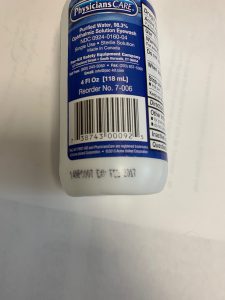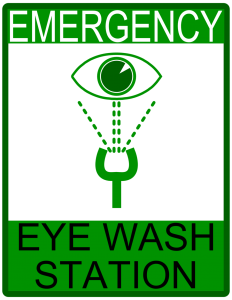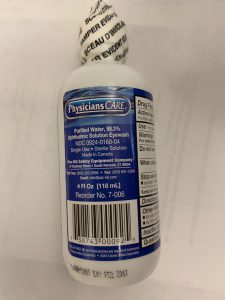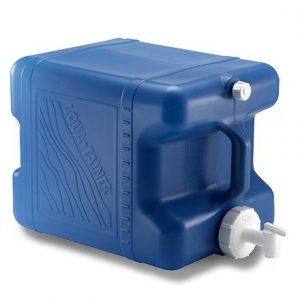Check your eyewash – it might be expired.
One of my greatest fears is for myself (or a crew member) to be injured from pesticide exposure. And although there are many routes that pesticides can enter the body, eye injury is particularly concerning. That is why it is so critically important to wear proper eyewear whenever it is required by the label and have wash water available if exposure does occur.
Most of us simply keep 2-3 bottles of eyewash solution in each vehicle to use if exposure does occur. Though these are compact and convenient, there are a few facts we should consider.
- First is volume. Most of these products are bottled in quantities of 1 to 32 fluid ounces. This seems sufficient until you consider that pesticide labels generally require you to wash your eyes with running water for 15-20 minutes.
- Moreover, OSHA requires eyewash stations to flow at a rate of 0.4 gallons per minute, which translates to 6 gallons over 15-minutes.
- Since I have never seen anyone carry 6 gallons of pre-packaged eyewash, it is likely these bottles will not be sufficient to properly clean your eyes.
- Secondly, bottled eyewash can expire. On a recent survey of a research lab, I found bottles there were over 3 years out of date! So, if you carry eyewash, make sure you check it routinely for expiration.

Your best bet for safety is to carry a plastic water can like the one below when you are applying pesticides in the field. It is 7 gal, which is a sufficient amount of eyewash, and it has an adjustable spigot so you can control flow and easily direct the water into your eyes. As long as you keep this water fresh, it can be an ideal way to ensure your crew has the protection they need.
We should be constantly reminded that eye protection is of utmost importance. So if you are relying on prepackaged bottles of eyewash, please ensure that you are carrying a sufficient quantity of them and that they are still in date.
For more information about protective eyewear please see: Protective Eyewear for Pesticide Applicators
This blog was written by Dr. Jason Ferrell, Director of the UF/IFAS Pesticide Information Office and the UF/IFAS Center For Aquatic And Invasive Plants
Click To Subscribe
 0
0



